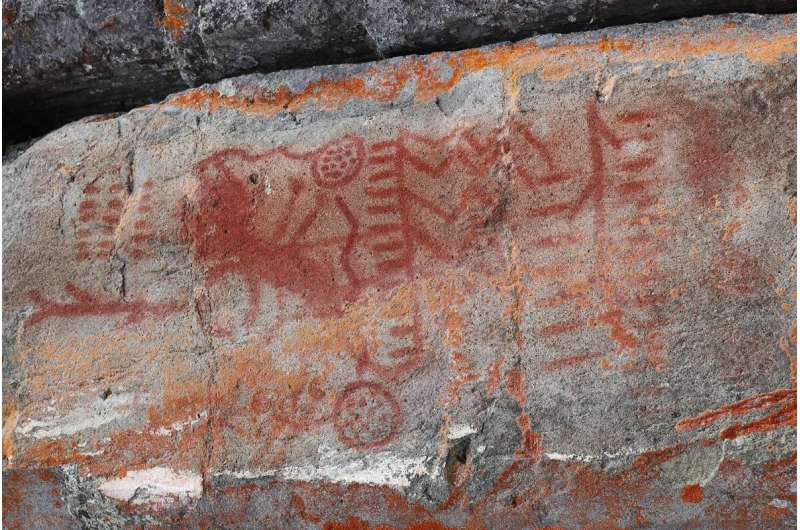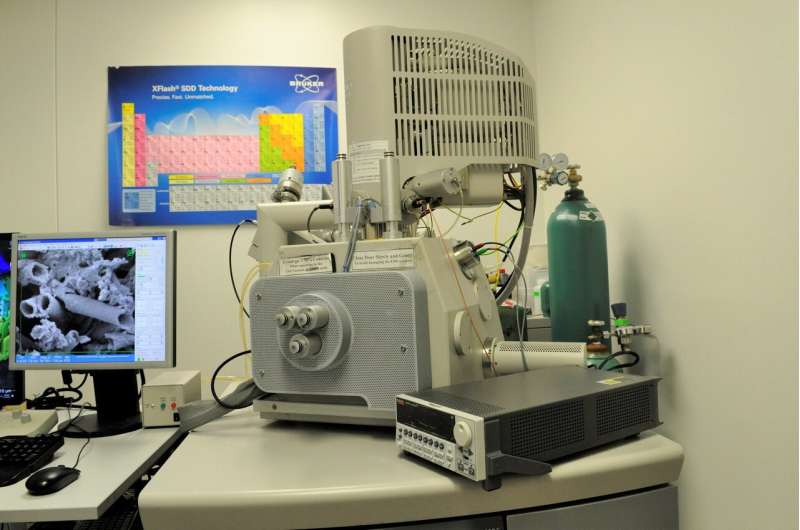Modern technology reconstructs properties of ochre, commonly found in ancient rock art

Ochre, one of Earth's oldest naturally occurring materials, was often used as a vivid red paint in ancient rock art known as pictographs across the world. Despite its broad use throughout human history and a modern focus on how the artistic symbolism is interpreted, little research exists on the paint itself and how it was produced.
Now, scientists led by Brandi MacDonald at the University of Missouri are using archaeological science to understand how ochre paint was created by hunter-gatherers in North America to produce rock art located at Babine Lake in British Columbia. The study was published in Scientific Reports, a journal of Nature.
"Ochre is one of the only types of material that people have continually used for over 200,000 years, if not longer," said MacDonald, who specializes in ancient pigments. "Therefore, we have a deep history in the archeological record of humans selecting and engaging with this material, but few people study how it's actually made."
This is the first study of the rock art at Babine Lake. It shows that individuals who prepared the ochre paints harvested an aquatic, iron-rich bacteria out of the lake—in the form of an orange-brown sediment.
In the study, the scientists used modern technology, including the ability to heat a single grain of ochre and watch the effects of temperature change under an electron microscope at MU's Electron Microscopy Core facility. They determined that individuals at Babine Lake deliberately heated this bacteria to a temperature range of approximately 750°C to 850°C to initiate the color transformation.

"It's common to think about the production of red paint as people collecting red rocks and crushing them up," MacDonald said. "Here, with the help of multiple scientific methods, we were able to reconstruct the approximate temperature at which the people at Babine Lake were deliberately heating this biogenic paint over open-hearth fires. So, this wasn't a transformation done by chance with nature. Today, engineers are spending a lot of money trying to determine how to produce highly thermo-stable paints for ceramic manufacturing or aerospace engineering without much known success, yet we've found that hunter-gatherers had already discovered a successful way to do this long ago."
More information: Brandi Lee MacDonald et al, Hunter-Gatherers Harvested and Heated Microbial Biogenic Iron Oxides to Produce Rock Art Pigment, Scientific Reports (2019). DOI: 10.1038/s41598-019-53564-w
Journal information: Scientific Reports
Provided by University of Missouri




















